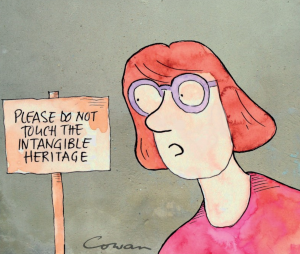 If you are arguing for the benefits of conservation generally, or trying to counteract views that heritage is seen as an inhibitor to development, IHBC’s Chair James Caird offers pointers in Context 154 – a case study of St Ives.
If you are arguing for the benefits of conservation generally, or trying to counteract views that heritage is seen as an inhibitor to development, IHBC’s Chair James Caird offers pointers in Context 154 – a case study of St Ives.
image by Rob Cowan
James Caird writes in Context 154:
There are many sides to the art of heritage conservation. Attention to detail ranks high among them, and it is from this that criticism of heritage as an inhibitor of new development tends to emanate. So it is vital that we also promote the wider picture in which the historic environment is an important facet of our social and economic environment as a whole. St Ives as a place, and Tate St Ives within it, are important lessons in letting our past help shape our future. What results is a fascinating example of how, in a single place, Virginia Woolf’s sequence of room – house – land – sea is presented for us to experience for ourselves. It is no wonder that so many people wish to, and do, come to St Ives to share this. As each of us experiences spaces and places in a unique way, the popular appeal of a place is a good indicator that its place-makers, whether they be ancient or modern, or few or many, have got it right. Learning lessons from the past is vital for the creation of place…
View the full article
View the Context archive
